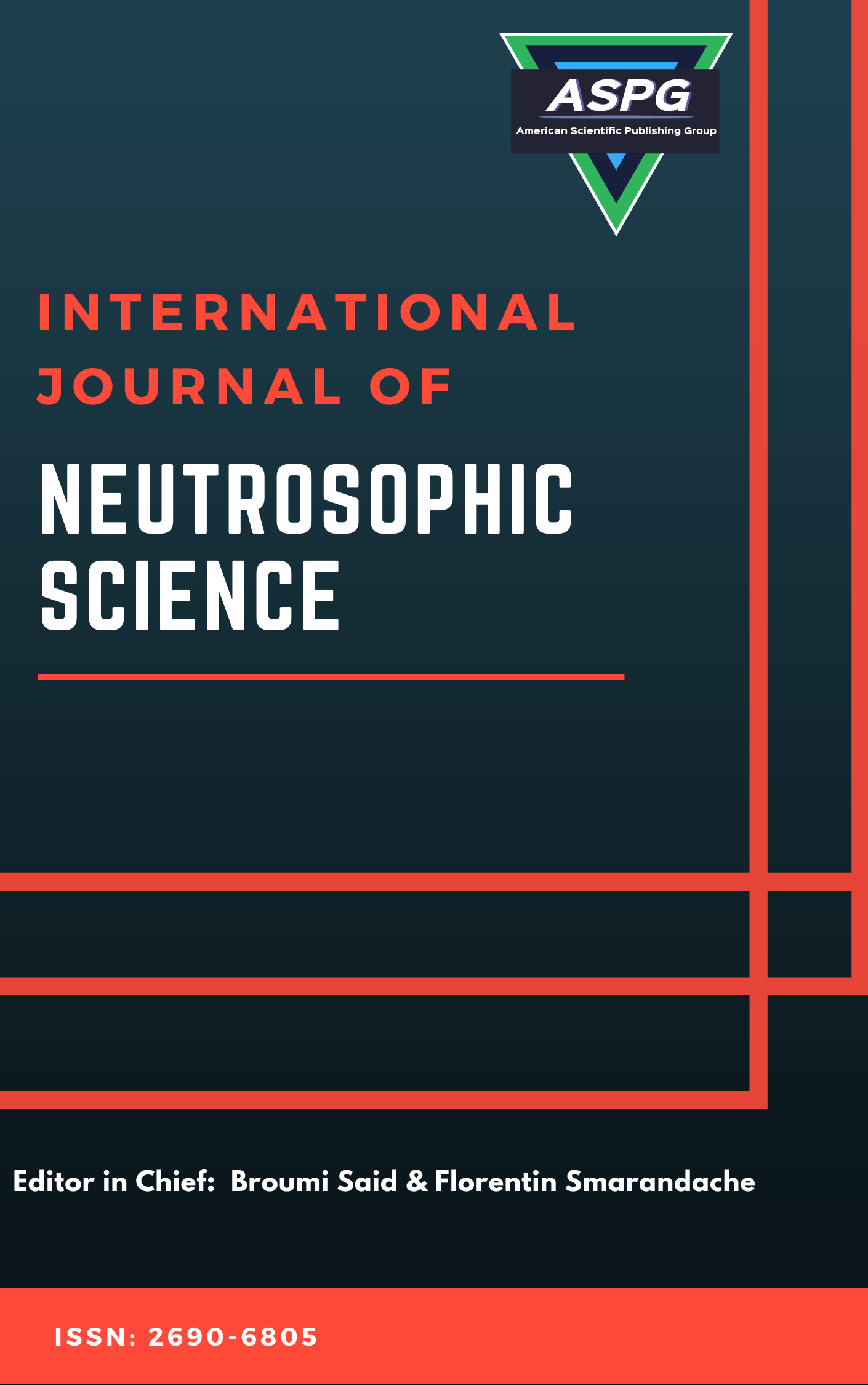

Volume 26 , Issue 3 , PP: 359-365, 2025 | Cite this article as | XML | Html | PDF | Full Length Article
Banin Shaker Jubeir 1 * , Mohammad El-Ityan 2 , Rafid Habib Buti 3 , Mohammed Hassan Hamza 4
Doi: https://doi.org/10.54216/IJNS.260326
This paper introduces and investigates a new class of bi-univalent functions constructed through the Neutrosophic 𝓆-Poisson distribution series. The study focuses on estimating the upper bounds of the basic coefficients |a_2 |and |a_3 | in the Taylor series expansion of these functions.
𝓆-Poisson distribution , Bi-univalent functions , Unit disk , Analytic functions , Starlike functions
[1] A. Alsoboh, et al., “Applications of neutrosophic q-Poisson distribution series for subclass of analytic functions and bi-univalent functions,” Mathematics, vol. 11, no. 4, pp. 868, 2023.
[2] W. G. Atshan and R. H. Buti, “Some properties of a new subclass of meromorphic univalent functions with positive coefficients defined by Ruscheweyh derivative I,” Journal of Al-Qadisiyah for Computer Science and Mathematics, vol. 1, no. 2, pp. 32-40, 2009.
[3] D. A. Brannan and T. Taha, “On some classes of bi-univalent functions,” in Mathematical Analysis and Its Applications, pp. 53-60, Elsevier, 1988.
[4] R. H. Buti, “Some Properties of a Class of Univalent Functions defined by Integral Operator,” Basrah Journal of Science (A), vol. 34, no. 3, pp. 45-50, 2016.
[5] M. Chen, “On functions satisfying Re{(f(z))/z} > α,” Tamkang J. Math, vol. 5, pp. 231-2343, 1974.
[6] S. S. Ding, Y. Ling, and G. J. Bao, “Some properties of a class of analytic functions,” Journal of Mathematical Analysis and Applications, vol. 195, no. 1, pp. 71-81, 1995.
[7] T. Ezrohi, “Certain estimates in special classes of univalent functions regular in the circle |z| < 1,” Dopovidi Akademiji Nauk Ukrajins Koji RSR, pp. 984-988, 1965.
[8] B. A. Frasin and M. Aouf, “New subclasses of bi-univalent functions,” Applied Mathematics Letters, vol. 24, no. 9, pp. 1569-1573, 2011.
[9] N. H. Haji, R. H. Buti, and H. E. Darwish, “On a Class of Analytic Univalent Functions Associated with (HR) Fractional Derivative,” MJPS, vol. 11, no. 1, 2024.
[10] B. Khan, Z. G. Liu, T. G. Shaba, S. Araci, N. Khan, and M. G. Khan, “Applications of q-Derivative Operator to the Subclass of Bi-Univalent Functions Involving q-Chebyshev Polynomials,” Journal of Mathematics, vol. 2022, no. 1, pp. 8162182, 2022.
[11] T. H. Macgregor, “Functions whose derivative has a positive real part,” Transactions of the American Mathematical Society, vol. 104, no. 3, pp. 532-537, 1962.
[12] N. Mustafa and V. Nezir, “Analytic functions expressed with q-Poisson distribution series,” Turkish Journal of Science, vol. 6, no. 1, pp. 24-30, 2021.
[13] C. Pommerenke, “Univalent functions,” Vandenhoeck and Ruprecht, 1975.
[14] R. A. K. Sherwani, et al., “Neutrosophic normal probability distribution—a spine of parametric neutrosophic statistical tests: properties and applications,” Neutrosophic Operational Research: Methods and Applications, pp. 153-169, 2021.
[15] F. Smarandache, “Introduction to neutrosophic measure, neutrosophic integral, and neutrosophic probability,” Infinite Study, 2013.
[16] H. M. Srivastava, S. Bulut, M. Çağlar, and N. Yağmur, “Coefficient estimates for a general subclass of analytic and bi-univalent functions,” Filomat, vol. 27, no. 5, pp. 831-842, 2013.
[17] H. M. Srivastava, A. K. Mishra, and P. Gochhayat, “Certain subclasses of analytic and bi-univalent functions,” Applied Mathematics Letters, vol. 23, no. 10, pp. 1188-1192, 2010.
[18] A. H. M. Al-Obaidi and F. Smarandache, “On Some Types of Neutrosophic Topological Groups with Respect to Neutrosophic Alpha Open Sets,” Neutrosophic Sets and Systems, vol. 32, pp. 425-434, 2020.
[19] A. H. M. Al-Obaidi, K. S. Tanak, and F. Smarandache, “On new concepts of neutrosophic crisp open sets,” Journal of Interdisciplinary Mathematics, vol. 25, no. 2, pp. 563-572, 2022.
[20] J. Smith and L. Johnson, “New approaches to analytic functions in neutrosophic mathematics,” International Journal of Mathematical Sciences, vol. 15, no. 1, pp. 45-60, 2023.